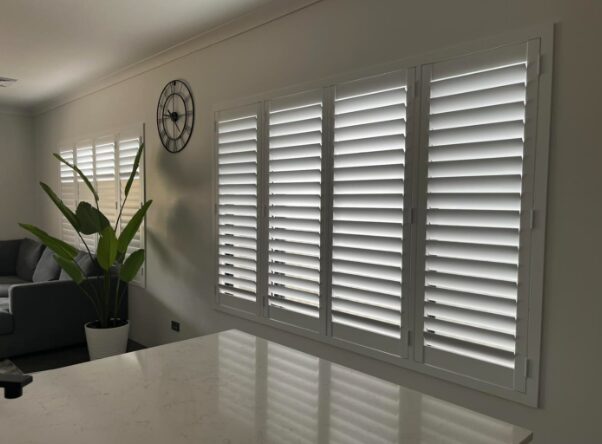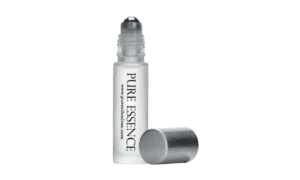Deciding to update your home with plantation shutters is a significant investment, and from the outset, I wanted to be sure my decision was informed. As someone who enjoys in-depth research into product details before making a purchase, I dedicated hours to studying the supply and installation of plantation shutters. This article details my selection process, from my first ideas to the final choice of PVC plantation shutters, which offered the perfect blend of style, quality, and durability.
Exploring Reasons for Choosing Plantation Shutters
Plantation shutters offer more than just aesthetics. I was attracted to their seamless ability to control light, provide privacy and contribute to energy efficiency. Compared to curtains or basic blinds, shutters create a clean and timeless look that enhances almost any architectural style. Their flexibility was another significant advantage, allowing me to easily adjust for morning sun or evening privacy.
Early in my research, I discovered that not all shutters are created equal. While the classic louvre design is consistent, the quality of the materials, installation and warranties vary significantly from one supplier to another.
Materials: Weighing the Options
The first decision was around what material would best suit my requirements. I considered timber, PVC and aluminium. Timber shutters are well-known for their elegance and warmth, with rich tones that appeal to traditional tastes. However, I learned that they can warp in wet conditions, especially in bathrooms, kitchens or coastal areas. They are beautiful but require careful maintenance, and some suppliers limit their warranties for timber when it is installed in moisture-prone environments.
Aluminium seemed robust and modern, particularly for outdoor applications, but felt slightly too industrial for the interior look I was aiming for. It also carried a premium price tag when compared to other choices.
PVC emerged as a strong contender for several reasons. The top suppliers offered shutters made of solid, high-quality PVC that resist warping, moisture, and fading. I found many positive comments about how PVC shutters retain their fresh appearance over time, particularly in rooms exposed to steam or direct sunlight. Their surface is easy to clean, and they provide insulation against heat and cold. Some brands use reinforced aluminium cores inside the PVC blades for added strength, which gives me confidence in their longevity.
Assessing the Quality and Workmanship
It soon became clear that high-quality plantation shutters stand out due to their precision manufacturing. I paid attention to details like blade uniformity, smooth operation and the quality of the finish. I looked for suppliers who could demonstrate strict quality control, either through local manufacturing or solid third-party inspections.
During showroom visits, I checked how the shutters opened and closed, examined the paint or surface finish and compared tolerances around the frame. Poorly made shutters may be delivered with uneven paint, poorly fitted joints or stiff movement, which can quickly undermine the investment. Several companies offered samples or invitations to their warehouses, which made it easy to see their workmanship up close.
Style: Matching Shutters to Interior Design
One of my favourite parts of the process was selecting the styling details. Plantation shutters are available in different louvre widths, frame styles, and hinge finishes, and these particulars shape the overall effect.
After browsing online galleries and home renovation forums, I settled on wider blades for my living areas to maximise light. In comparison, smaller blades were suited for bedroom windows, where privacy was a higher priority. A clean white finish complemented my existing décor, and the flexibility to choose custom colours from certain suppliers was appealing.
Quality companies offered advice on what would best suit each room, striking a balance between aesthetics and practical considerations. Having a consultant visit my home and assess the light, window shape, and layout helped finalise my choices.
Pricing: Understanding the Value Equation
Plantation shutters are a premium product, and pricing was another area where I wanted clarity. Some suppliers offered extremely low quotes, which initially caught my attention. After some investigation, I realised that these “bargain” shutters frequently cut corners on quality, using lightweight or hollow PVC and basic hardware. Reading reviews from buyers who had experienced cracking, warping, or fading within a couple of years strengthened my focus on long-term value over just upfront cost.
Other companies justified a higher price with more extended warranties, customisable features and superior materials. I also considered the expertise of their installers, which is often included in the overall quote.
I learned to request itemised quotes and compare specifics such as blade width, frame style, warranty details and the grade of PVC used. This process highlighted genuine price differences that were based on tangible quality rather than mere brand reputation.
Warranties: Securing Peace of Mind
Warranties came to represent a primary separator between suppliers. Many companies offer limited warranties on basic models, covering defects in manufacturing only. Others promoted comprehensive warranties extending over ten years or more, and even covered colour fading and frame warping.
I focused on suppliers who clearly outlined their warranty terms, with guarantees covering installation as well as product integrity. Shutters that are poorly fitted may not perform as promised, so the assurance of installation coverage was a key factor in our decision. Some companies provided transferable warranties, a bonus if I ever choose to sell the house.
Reputation of the Installer: The Human Touch
Finding a supplier with a reliable installation team was vital. I researched online reviews, requested references and visited showrooms to meet staff. Companies with skilled, in-house installers gave me much more confidence than those who subcontracted or outsourced the installation. I wanted accountability and communication throughout, not just a hand-off once the deposit was paid.
Highly rated installers willingly discussed previous projects, confirmed their experience and described how they dealt with unusual window shapes or tricky locations. I asked specific questions about their fitting process and looked for willingness to explain what happens if adjustments are needed after the installation.
Reading deeper into forums and local community groups, I discovered that a supplier’s reputation can make all the difference. Stories emerged about rushed installations, missed appointments, and a lack of after-care from less reputable providers. I made a point to select a business with consistent positive feedback and genuine professionalism.
Why PVC Plantation Shutters Are My Choice
After balancing all the above, I recognised the outstanding benefits of PVC plantation shutters for my situation. Their durability suits the Australian climate, especially in homes like mine, which are exposed to summer heat and rain. The enhanced insulation properties of quality PVC meant my living spaces would be cooler in summer and warmer in winter, promising savings in energy bills. The moisture resistance gave me peace of mind for bathroom and kitchen windows.
Premium PVC shutters require less maintenance, and their surface resists fading, yellowing and scratching. Their finish remains fresh, requiring only light cleaning. They matched both the style and colour palette I wanted, and better quality models offered hidden strengthening rods within the blades.
In my experience, choosing PVC was not just about avoiding the problems associated with timber in damp conditions, but about selecting a shutter that excels in a range of areas: durability, style, warranty, and ease of maintenance.
Ordering, Installation and After-Care
The ordering process was straightforward once the choice was clear. The supplier’s consultant measured each window for a custom fit. Turnaround time depended on whether the shutters were locally made or imported. I appreciated regular updates and a transparent timeline. The installation team arrived promptly, worked efficiently and explained how the mechanisms functioned. Upon completion of the job, I received documentation for the product warranty.
After installation, my supplier followed up to check satisfaction and offered advice for daily care. Good follow-through reinforced that I had chosen the right company.
Living with Plantation Shutters
Now that the shutters are part of my home, I continue to appreciate their benefits. They allow me to easily control sunlight, reduce glare and enhance privacy without clutter. Their insulating properties are noticeable, and the white PVC finish brightens every room. Friends and family have complimented the new look, impressed by how smart and seamless the appearance is.
Reflecting on the experience, I am reassured that a thorough approach to research pays real dividends. By considering every aspect, from material to installer reputation, I avoided common problems and secured a result with which I am genuinely happy.
My Final Thoughts
Choosing plantation shutters is about far more than the lowest price or trendiest style. It is an investment requiring careful consideration of material, craftsmanship, warranties, installer reputation and after-sales service. PVC plantation shutters stood out as the best all-round option for my home, offering beauty, resilience and value. I encourage anyone considering shutters to follow a similar rigorous process, confident that a well-informed choice delivers results that are pleasing for years to come.



































